
Diffusion and Osmosis
- Subject:
- Agriculture & Natural Science
- Biology
- Material Type:
- Lesson
- Provider:
- Khan Academy
- Author:
- Monterey Institute for Technology and Education
- Sal Khan
- Date Added:
- 04/14/2016
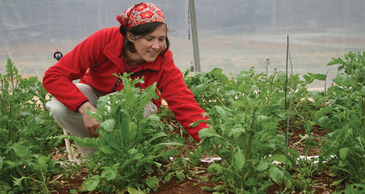

Diffusion and Osmosis
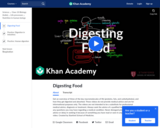
Get an overview of three of the key macromolecules of life (proteins, fats, and carbohydrates), and how they get digested and absorbed.

Paul Andersen starts with a brief description of feeding methods. He then details all of the major parts within the human digestive system. This tour starts in the mouth, moves down the esophagus, through the stomach, small intestine, colon and rectum. He explains how all of the major macromolecules are digested and absorbed by the body.

Hank takes us through the bowels of the human digestive system and explains why it's all about surface area.
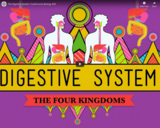
The video resource "The Digestive System: CrashCourse Biology #28" is included in the "Biology" course from the resources series of "Crash Course". Crash Course is a educational video series from John and Hank Green.
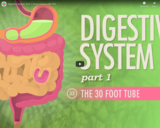
The video resource "Digestive System, Part 1: Crash Course A&P #33" is included in the "Anatomy & Physiology " course from the resources series of "Crash Course". Crash Course is a educational video series from John and Hank Green.
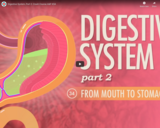
The video resource "Digestive System, part 2: Crash Course A&P #34" is included in the "Anatomy & Physiology " course from the resources series of "Crash Course". Crash Course is a educational video series from John and Hank Green.

The video resource "Digestive System, part 3: Crash Course A&P #35" is included in the "Anatomy & Physiology " course from the resources series of "Crash Course". Crash Course is a educational video series from John and Hank Green.

In this video Paul Andersen explains the difference between diploid and haploid cells. He starts with a brief description of the central dogma and how genes code for proteins. He then uses the phenotype of red hair to explain that humans are diploid creatures. He discriminates between diploid somatic cells and haploid sex cells.

Mr. Andersen demonstrates the azide-winkler method of dissolved oxygen analysis.

After watching video clips from the Harry Potter and the Goblet of Fire movie, students explore the use of Punnett squares to predict genetic trait inheritance. The objective of this lesson is to articulate concepts related to genetics through direct immersive interaction based on the theme, The Science Behind Harry Potter. Students' interest is piqued by the use of popular culture in the classroom.

Learn how there are two distinct Bohr effects happening at the same time in the placenta. Rishi is a pediatric infectious disease physician and works at Khan Academy.

Use the left ventricular pressure and volume information to put together a cool new graph. Rishi is a pediatric infectious disease physician and works at Khan Academy.

In the growing season, farmers and ranchers keep a watchful eye for any sign of drought. Early warning information can increase their range of options for dealing with the lack of water.
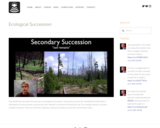
Paul Andersen describes the process of ecological succession. During this process life reestablished itself after a disturbance. During primary success all of the material is removed including the soil. For example during a volcanic eruption all traces of life are removed. However during secondary success the soil remains intact.
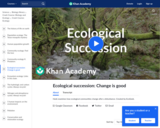
This video is from the Khan Academy subject of Partner content on the topic of Crash Course and it covers Ecological Succession: Change is Good.
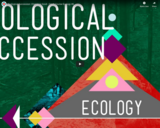
The video resource "Ecological Succession: Change is Good - Crash Course Ecology #6" is included in the "Ecology" course from the resources series of "Crash Course". Crash Course is a educational video series from John and Hank Green.
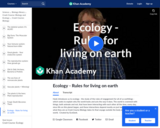
Hank introduces us to ecology - the study of the rules of engagement for all of us earthlings - which seeks to explain why the world looks and acts the way it does. The world is crammed with things, both animate and not, that have been interacting with each other all the time, every day, since life on this planet began, and these interactions depend mostly on just two things... Learn what they are as Crash Course Biology takes its final voyage outside the body and into the entire world.

The video resource "Ecology - Rules for Living on Earth: Crash Course Biology #40" is included in the "Biology" course from the resources series of "Crash Course". Crash Course is a educational video series from John and Hank Green.
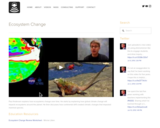
Paul Andersen explains how ecosystems change over time. He starts by explaining how global climate change will impacts ecosystems around the planet. He then discusses how continental drift created climatic changes that impacted mammal species.